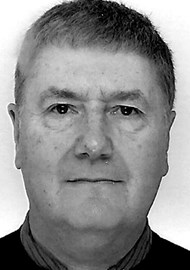As a result of the rationing of healthcare in the NHS and the treatment of nasal trauma by other specialties, there is anecdotal evidence that current plastic surgery trainees have less exposure to rhinoplasty procedures. This article explores the issue further.
Rhinoplasty is derived from Greek and means ‘to shape the nose’. The history of surgical rhinoplasty began in antiquity, while non-surgical rhinoplasty using fillers (liquid rhinoplasty) is a phenomenon of the 21st century.
During our training, exposure to all forms of nasal, septal and reconstructive surgical procedures was readily available in the National Health Service. However, with the explicit rationing of healthcare, many of these training opportunities have been lost forever and can now only be obtained in the private sector. Added to this is the loss of nasal and septal trauma cases to other specialties, thus reducing current trainees’ exposure to corrective post-traumatic rhinoplasty surgery.
In an effort to increase the exposure of our trainees to rhinoplasty techniques, over the last decade, the British Association of Aesthetic Plastic Surgeons (BAAPS) and the British Association of Plastic Reconstructive and Aesthetic Surgeons (BAPRAS) have instigated supervised aesthetic fellowships for plastic surgery trainees, to allow them exposure to aesthetic nasal surgical operations.

We, the authors, sought to accurately document the potential deficiencies in the training of rhinoplasty surgery for plastic surgery trainees. It was therefore decided to survey all full members of the BAAPS in an attempt to ascertain what training they had received in aesthetic nasal surgery, which rhinoplasty procedures they performed in the private sector and the NHS, and whether they taught these techniques to plastic surgery trainees.
Methods
At the time of writing in the UK, the vast majority of aesthetic nasal surgery is performed in the private sector. To ascertain and record how much of this work is currently being performed by plastic surgeons, we conducted an anonymous online survey of all full members of the BAAPS, following approval by the Council of BAAPS and in accordance with the principles of the Declaration of Helsinki. The members’ survey was distributed by the BAAPS Head Office in London, via Survey Monkey (Momentive, Dublin, Ireland) and remained open for a period of one month. The principles outlined in the Declaration of Helsinki were adhered to throughout this project.
Results
The survey was distributed to all full members (260) of the BAAPS and 22% fully completed the questionnaire. This is a relatively low response, which is perhaps related to the reduced appetite for rhinoplasty work amongst the current cohort of BAAPS members. Of these, 58% practised in both the NHS and private sector, the remainder working only in private practice. A total of 65% had been in private practice for over 11 years, 76% were performing rhinoplasty surgery as part of their private work with a further 11% having previously offered rhinoplasty to their private patients. The most common reasons for ceasing this aspect of plastic surgery were low patient numbers and managing unrealistic patient expectations, followed by surgical complexity, high revision rates and medico-legal issues. These surgeons mainly referred prospective rhinoplasty patients to another plastic surgery colleague.
Of those surgeons with an NHS practice, 23% were able to offer cosmetic rhinoplasty or septo-rhinoplasty in the NHS, 30% post-traumatic septo-rhinoplasty, 17% cleft rhinoplasty, 17% functional septo-rhinoplasty and 20% were dealing with nasal trauma. A total of 97% performed nasal reconstruction for patients with skin cancer and intra-nasal cancer.
In their private practice, 76% performed cosmetic rhinoplasty, 54% post-traumatic septo-rhinoplasty, 29% functional septo-rhinoplasty and 51%, nasal reconstruction for skin malignancies. All plastic surgeons who responded taught rhinoplasty techniques to their trainees or fellows.
Only 25% of respondents routinely or often referred rhinoplasty patients for a preoperative psychological assessment and 55% reported a similar or increased number of patient referrals for rhinoplasty surgery, following the Covid-19 pandemic.
Regarding where their significant rhinoplasty training was obtained, 78% responded that this had occurred in the NHS (pre-Certificate of Completion of Training (CCT) and 20% in the NHS (post-CCT). A total of 53% had gained exposure to rhinoplasty surgery as part of an aesthetic / rhinoplasty fellowship and 53% intimated that most of their experience was in private practice as a consultant.
Fifty-five percent of the respondents performed between 1–20 cosmetic rhinoplasties per year, with 35% carrying out over 30 procedures per annum. Interestingly, 92% performed between 1–20 secondary rhinoplasties per year, with 5% carrying out over 40 such procedures each year.
Discussion
This very important survey of our specialty, with the initial purpose of documenting potential deficiencies in the teaching of rhinoplasty techniques for plastic surgery trainees, has confirmed the inadequacy of rhinoplasty exposure for young surgeons, currently in the NHS, both regarding aesthetic rhinoplasty and other nasal pathologies. Only a small percentage of plastic surgeons can offer rhinoplasty surgery to their NHS patients and with austerity and further rationing of healthcare, this is unlikely to improve in the foreseeable future.
It has also been confirmed that most of those plastic surgeons presently offering aesthetic rhinoplasty to their private patients gained most of their experience of such surgery during their training in the NHS.
It has additionally sheds new light on the operative practices of those aesthetic plastic surgeons who currently perform cosmetic rhinoplasty. The majority prefer the open rhinoplasty approach and most use topical and injectable vasoconstrictors, as well as tranexamic acid, to improve visualisation of the operative field. Two thirds still perform a standard rhinoplasty, and we noted, with interest, that a significant number now carry out nasal osteotomies and reshaping with an ultrasonic device, rather than using the traditional nasal osteotomes and rasps.
One unexpected finding was the large number of plastic surgeons engaged in secondary rhinoplasty surgery: overall, 58% of the respondents offered secondary rhinoplasty. Of those who carry out secondary rhinoplasty, 92% performed between 1–20 secondary procedures per annum and 5% carried out over 40 secondary rhinoplasties each year.
Unfortunately, with the limited number of questions available in the survey, we were unable to ascertain the specialty of the original operating surgeon(s).
It is apparent from this study that the exposure to nasal surgery available for plastic surgery trainees is substantially restricted and in the NHS is likely to become more and more limited. Plastic surgeons need to become more involved in the management of acute nasal trauma, with the potential positive consequence of trainees being exposed to functional and cosmetic post-traumatic rhinoplasty surgery.
The BAAPS and BAPRAS may have to investigate funding more and longer aesthetic fellowships and liaising with other rhinoplasty societies to ensure that our trainees gain appropriate exposure and education in all forms of nasal surgery.
Conclusion
At the present time, the vast majority of plastic surgeons still perform aesthetic nasal surgery in the private sector and in that setting, teach both aesthetic and functional nasal surgery to their trainees and fellows. However, due to healthcare rationing in the NHS, these procedures are not readily available, resulting in a significant reduction in our trainees’ exposure.
Both BAAPS and BAPRAS promote, fund and organise well-attended instructional and cadaveric teaching courses on aesthetic and functional nasal surgery and provide aesthetic fellowships and mentorships in the UK, as well as offering travelling bursaries for aesthetic study abroad. However, the number of these potential opportunities are limited.
The current lack of training in the NHS should be a wake-up call for our specialty to become more actively engaged in the management of nasal bone and septal trauma. This would expose trainees to nasal bone manipulation and nasal airway management and potentially result in opportunities to assist and be taught post-traumatic septo-rhinoplasty surgery.
Finally, if further teaching and training episodes are not available, then 90% of current consultant plastic surgeons see the limited exposure of our trainees to nasal surgery as a major barrier to plastic surgeons continuing in this field.
Declaration of competing interests: None declared.








